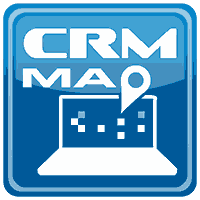
Here are 3 simple methods to actually increase your profits.
Option 1 – Improve your Sales technique.
Sales is a topic that I could spend hours talking about. As a novice I thought sales was a dirty word, but once you have been in business a long time you will see this differently. For those who stay in business, the reason they do, is that they have good sales people. So what is a good sales person?
A good Salesperson can:
- say No to a wrong/bad sale.
- select the right fit/product for the client
- endear confidence and a desire to repeat purchase
- sell the product not just the price
These dot points mean that as a business you need to have quality, well educated, empathetic, intelligent sales people. It does not matter what the product is. What matters is the customers experience.
With this in mind, sales people need to be able to offer the right product, at the right price in a timely and professional manner. This involves a lot of skills. The application of these skills involves Sales Techniques.
The key to increased profits really can lie in getting the right technique. I met building improvement owner, and the sales technique that they employed included some very strict timing and steps. He found that the combination of timing and steps increased his sales and margins significantly.
So the key is to find the Sales Technique that matches your company and your product.
My experience shows that for each customer you need to find what matters to them, so listening is vital. A sales person that listens is over halfway home. Know if the sale is a need or a want. Know what is going to trigger your customer.
Once you know what matters, you re-enforce this with your sales script / demonstration. However with that said, Tools are vital. Ways to show off the product – Samples, Videos. Ways to confirm that the client can be confident in you – e.g. referrals. Local referrals are always best, and it is a reason that products like CRM-Map are so popular.
Finally, the sales person must close the sale. Closing is interesting. Some sales people can demonstrate, but they just can’t close – they are actually demonstrators, not sales people. Good salespeople can close a sale. There are many techniques for this, and once again this must match your company and product.
Some closing Techniques include:
Assumptive Sale : e.g. Do you want this in Red or Blue (get the client to make positive statements of ownership, and the sale is a natural)
Reason to decide today: Could be a discount, limited stock, limited stock availability etc.
3 Yes’s to close: It is physiologically suggested that if your client will agree with the sales person on 3 important points, then agreeing to purchase is a minor agreement.
Option 2. Repeat Sales to Existing Clients
The easiest and most profitable sale is a repeat sale. Very simply put, the client knows you, trusts you, your don’t have to find them, prove yourself, or establish a relationship. All of this has already been done.
So look after your existing clients.
Successful companies do this in a range of ways, e.g. Loyalty cards, personal service. Today, it was announced that Dick Smith Electrical has gone into voluntary receivership. Well I am not surprised. It is not to do with sales, but related to profits. They have never worked at repeat sales. They do not treasure their clients – you are just a number. Plus they are in an incredibly competitive market.
Repeat sales really do make a big difference in the bottom line.
This morning I had a personal experience. I have for 30 years purchased house paint from the same store. As a have a few properties, this is about $1000 per year minimum. So I keep going back, the staff know me, and after a few sales, they gave me a discount. I now know, that I don’t need to shop around that they will give me the best price. This morning however, a new staff member refused to discount the product I was purchasing – and the price difference was about 20{c36baba5c73b6c9a0b80d5e7ba0a8acbfd233dc9453b651cdb653391d31dba51}. I was not impressed. So I waited until a known staff member arrived and then all went well. However, I can state that this could have ruined a valuable relationship. So owners, don’t rest on your laurels. You need to have systems in place to care for these valuable clients even if staff change.
Option 3. Lower your costs
Lowering costs! Sounds easy, feels difficult. Well it is easier than you could believe.
I am the president of a large sporting association. With all the new laws brought in by the Fair Work Act, voluntary sporting associations have been really hit hard. So as the president, I was faced with 2 problems. Making sure that the association was running legally correct, and making sure that the association ran at a profit. The biggest problem was “But this is the way we have always done it”.
The only constant in life, is Change. Once that is accepted in a practical sense, then changing to be more profitable is possible.
So my next step was to review each and every account. I had the internal book keeper do this with me, and made sure that all rules were followed. We had to think outside of the square. This involved getting the association registered as a Work for the Dole option, plus creating a relationship with the local employment agencies, so that suitable volunteers could be located.
We also reviewed some of the products we had, so that we had products that clients wanted and were happy to pay for.
Technology can be a big cost saver if used well, but, poorly applied technology can also be a cost waster. The key is to know what technology is available, and what is the right decision? The difficulty is that no one has a crystal ball, and technology moves at a rapid rate. Here are my suggestions to using technology well in your company, so that you will save money.
Don’t get the latest greatest, unless necessary.
Buy the best value for now, but don’t expect technology to last longer than 2 years.
Get tools that will save you in staff time and give you the right information.
Get tools that will ensure your work is not temporary. Your data should be electronically saved and available to other sales people. Don’t just loose the data with either the sales person, or the electronic filing cabinet. Use a good database and store the data and make sure it is accessible as necessary.
Listen to wisdom in the field you are reviewing.
Consider alternative methods, e.g. Going Virtual, cloud based etc.
Use good Systems and Databases, e.g. MYOB, Xero, Salesforce, or Zoho as examples.
One of your responsibilities is to make sure that you give your staff the tools to do their job. Make sure these tools will work, and that the valuable data you gain is utilized and not lost.
Now improve your bottom Line.
I hope that these ideas will assist you to improve your bottom line. But if you are at least considering, maybe your next step is to communicate your needs and thoughts with an executive committee or mentors.
Mentors have many functions. They can make sure you see the facts, not just what you want to see. They can give you a kick or let you release when you need it. Mentors are great. If you don’t have one or some, then work on this. You can even pay for this type of service, with Executive Meetings.
A lot of mentors, are happy to Mentor, as it is often a 2 way streak. e.g. they get as much as they give. However, others are happy to just be there, as they have experience and want to share. But having a mentor is a good way to make sure you are on the right path.





